How to make a rain barrel for saving water at home
Learn how to make a rain barrel and get started on water saving in your backyard
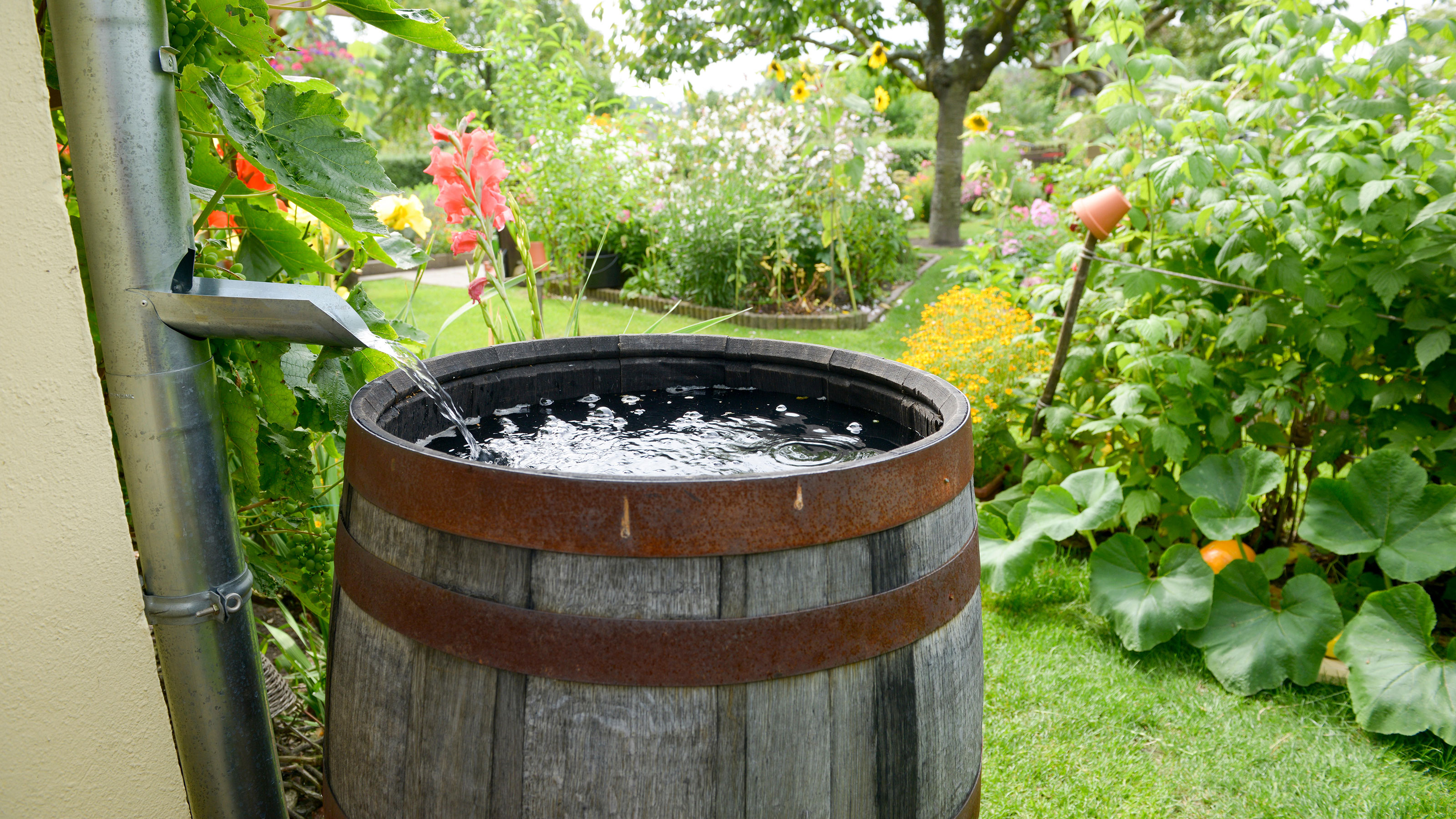

Learning how to make a rain barrel is a great step towards saving water at home. A rain barrel is a pretty simple DIY project to make: all you need is a water storage barrel of some kind, a way to drain the water out of the barrel, and a place to put it.
Use a rain barrel for watering plants and you'll probably notice their condition improve too. Sean Lade, director of Easy Garden Irrigation, tells us that using rainwater from your own rain barrel is great for plants and lawns as it has higher nitrogen levels which boosts growth.
'Due to the treatment and added chemicals, some plants can also react badly to regular drinking water straight from the tap,' Sean says. 'If you have plants in your garden that aren’t looking their best after watering them using your garden tap, switching to rainwater might help them flourish.'
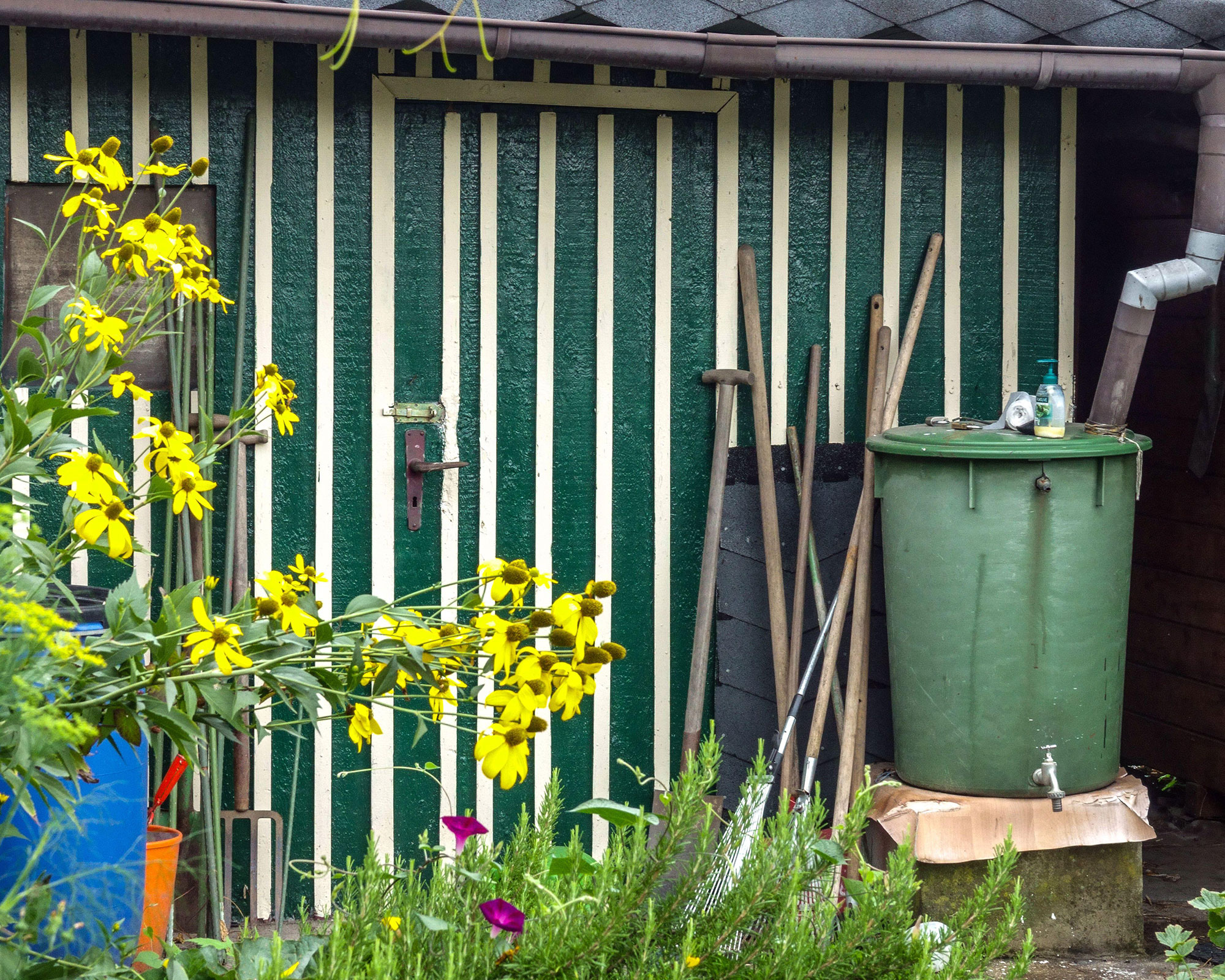
Using a rain barrel at home is a great way to save water
How to make a rain barrel in 5 easy steps
As any gardener will tell you, learning how to use a rain barrel can have many benefits for your plot, helping you to reduce your water consumption and save you money in the process.
Follow these simple steps for how to make a rain barrel and you'll soon get to see the benefits of collecting rainwater in this way.
- Find your barrel or water drum – a 55-gallon barrel is the typical size, but you could use something like a large garbage bin with a lid or an old wooden barrel. Then choose the spot where you'll be placing your barrel, such as near a downspout from the roof guttering on your house, garage or shed.
- Drill a hole in the side of the drum, a few inches from the bottom, to avoid any debris and sediment that will inevitably collect inside. This hole is for a spigot or tap, or you can screw in a drain valve like this rain barrel quarter turn spigot from Amazon. Drilling a small hole at the top of the barrel is also advised, as it allows some air to flow in and out of the barrel.
- Make a basic base to raise the rain barrel off the ground, whether from cinder blocks, bricks, scrap wood, or something similarly sturdy. Ideally you want to raise it at least a foot off the ground so that you can easily get a bucket or watering can underneath the tap at the base of the barrel. Raising it slightly can also help to increase the water pressure if you want to use your rain barrel with a garden hose.
- Place your barrel on the base, then direct the downspout so it flows into the rain barrel.
- Cover the barrel, ideally with a tight-fitting lid to keep organic matter like leaves and dirt out of the water. If you've used a downspout, you'll also need to cut a hole in the lid to accommodate this. If you don't have a suitable lid, a mesh cover, such as these drawstring mesh rain barrel covers from Amazon, will keep out most debris.
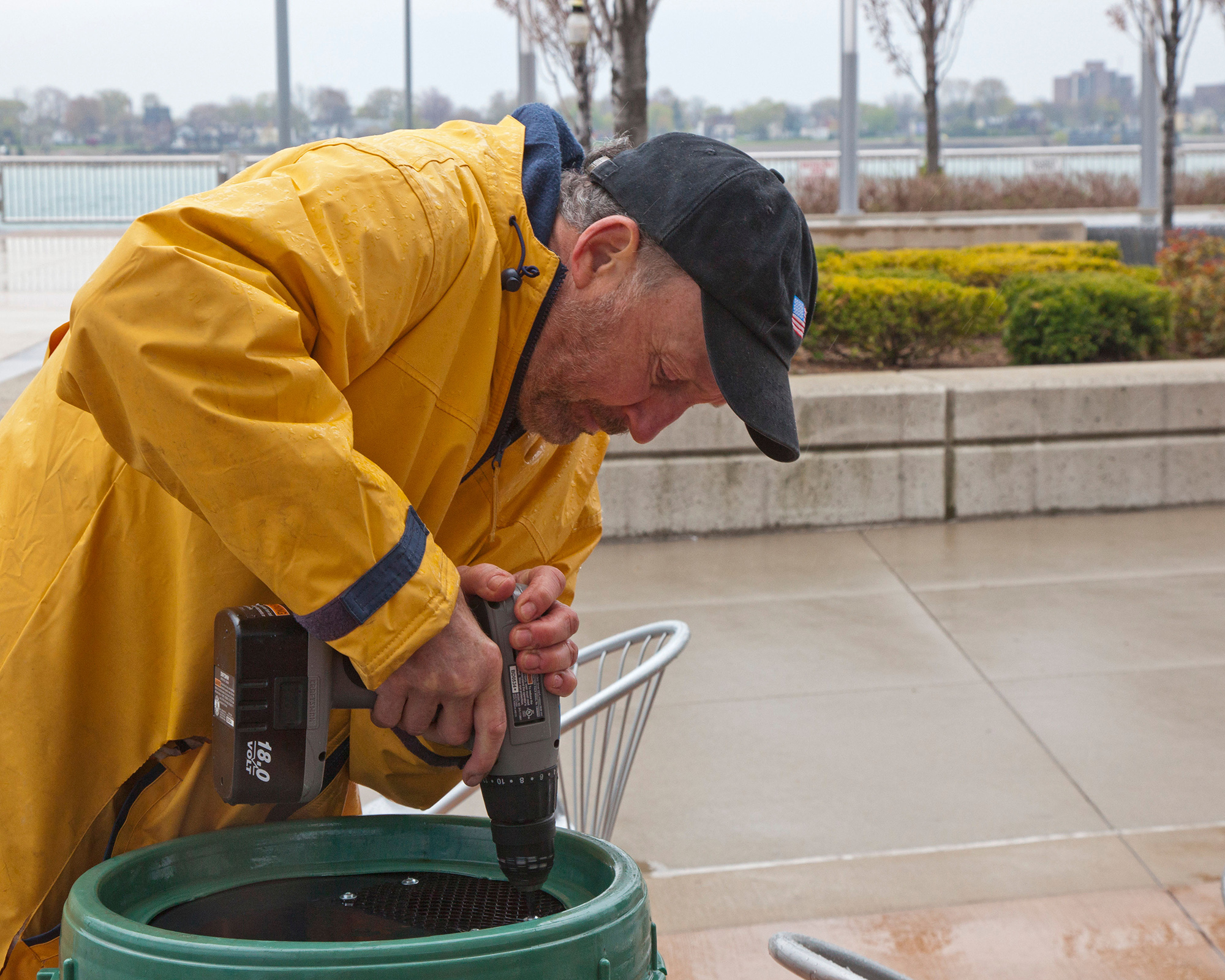
Drilling holes into your rain barrel allows air to move in and out
What material is best for a rain barrel?
When it comes to how to make a rain barrel, you have plenty of material options. The most common choice is usually plastic, which is both durable and lightweight enough to be portable. Using recycled plastic is a good eco-friendly option too.
A great alternative to plastic is using an old wooden barrel originally used for whisky or wine, so long as you've checked it's still watertight first. Even better if they have a fitted lid, which may have a rope handle too. Bear in mind that barrels previously used for alcoholic products may still hold the smell.
For a really cheap garden idea, you can even turn an old garbage can into a rain barrel, just make sure you clean it thoroughly before using it.
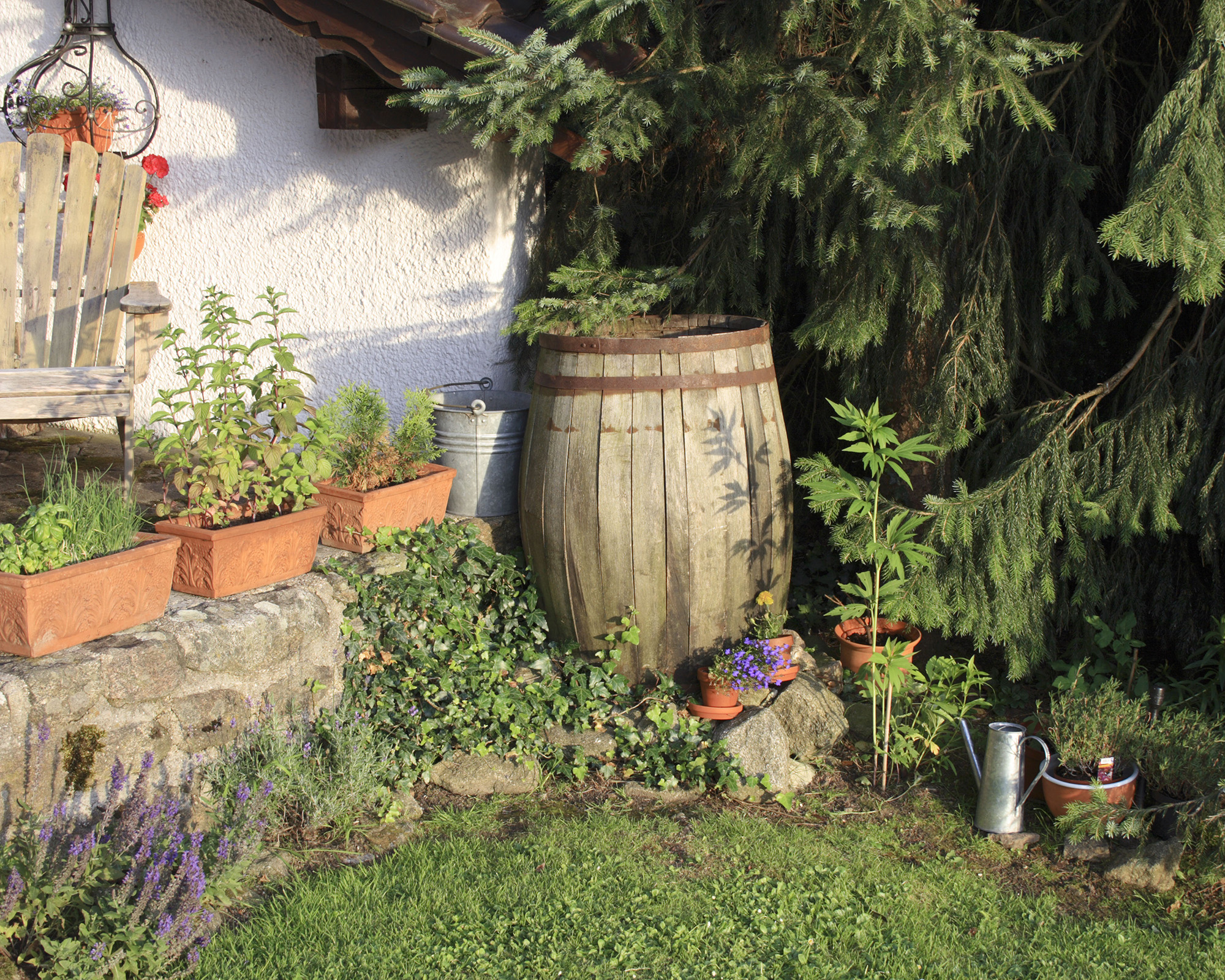
Wooden barrels can be used to collect rainwater too
Where can I find a free rain barrel?
Let your imagination run wild with this one, and think of all possibilities. Salvage yards, garage sales, food processing plants and car washes are all potential locations that might have large barrels going spare. Keep an eye out for food-grade plastic, which ensures the water won't become contaminated.
if you're living in a storm prone area, our garden water saving tip is to have more than one barrel to accommodate additional and unexpected rainfall. So if you find a style of barrel that works for you, pick up an extra one.
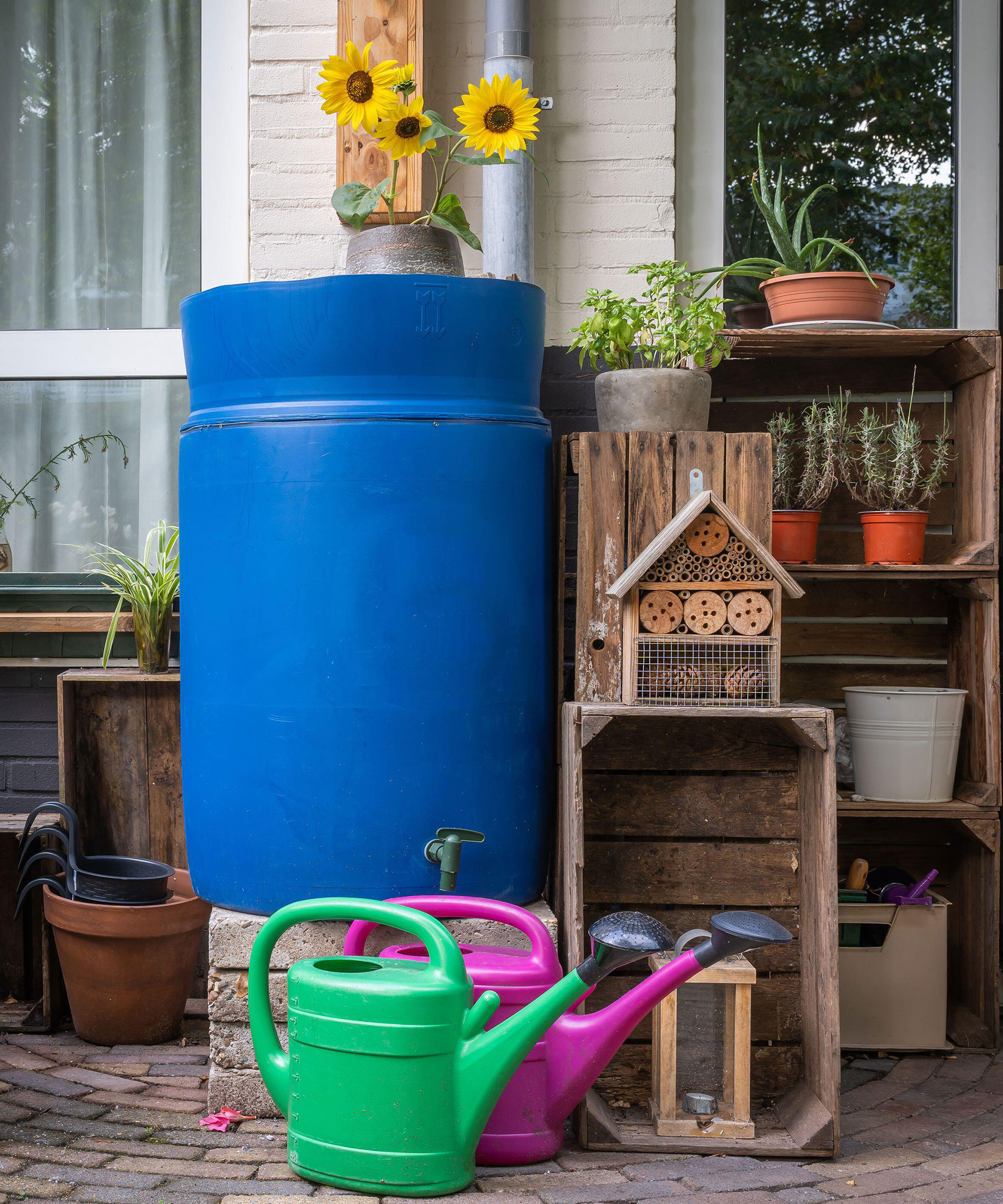
Raising up a rain barrel on a simple platform makes it easier to place watering cans underneath the tap
How long can I store water in my DIY rain barrel?
It's a good idea to empty out water from your rain barrel fairly regularly as if you leave it for long periods of time it can encourage the growth of algae and other contaminants.
If you're using your collected rainwater exclusively because of the rainwater benefits for watering plants, Sean says you can also mix up your plant feed directly in the barrel. 'As long as it is not too concentrated, you should be OK. This will further boost plant growth and increase flowering yields,' he says.
'One thing to remember is that you will need to keep your water butt clean. It can be a haven for algae, fungi and bacteria. When your water butt has run dry, give the inside a clean with lemon and vinegar.'
'You can also buy water butt treatment to prevent bad odours and the build-up of scum. It will also keep the water clear of algae and slime.'
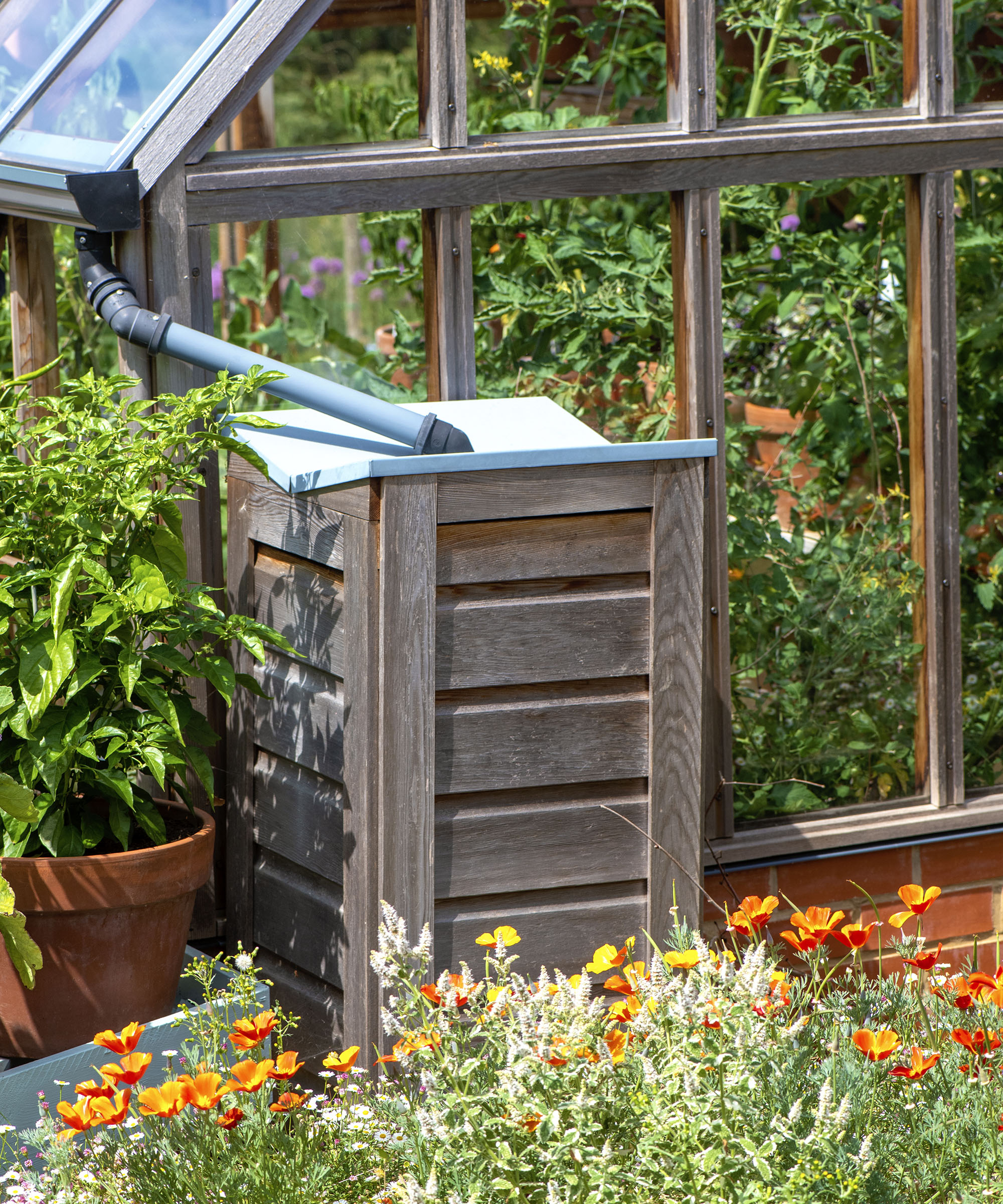
Covering your rain barrel with a tight fitting lid helps keep out debris

Freelance writer and author Flora Baker is a keen amateur gardener and houseplant enthusiast. Her small garden in South London is a constant work in progress as she gets to grips with snail prevention, DIY trellises and what to plant in shady spots overrun with ivy.
